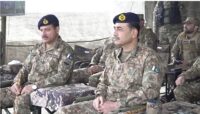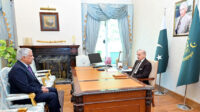Pakistan has become the fifth most populist nation in the world. Around 64% of its population is under the age of 30. Over the last three decades, the demographic outlook of the country has transformed from being dominantly rural to becoming majorly urban. Currently, 38% of the population lives in urban and suburban areas and this number is only increasing owing to rural-urban migration.
Throughout this time, governments have paid lip service to this unplanned and unmanaged activity. Carving housing schemes through mass deforestation, unplanned urban sprawl, lack of sewage management system, and congested road infrastructure has changed cities in Pakistan to unorganized settlements. The air quality index in Lahore and Karachi has quite often reached dangerous levels as unregulated vehicle addition has made the air unbreathable. However, despite various inefficiencies on the administrative and management front, urbanization is generally considered a positive activity. In Pakistan, if managed properly, it is a sign of progress that will improve the socio-economic life of citizens. Informed citizens will claim and demand their rights, bolstering democratic practices and galvanizing a vibrant civil society. Thus, urbanization is a blessing in disguise for Pakistan if it is managed and administered properly.
Pakistan at independence was a rural dominant society with feudal structures. Patronage and rent-seeking were principal drivers of politics and economics. The majority of people remained subjugated and disenchanted from politics and progress. However, urbanization is bringing a transformation. As people move to cities, the traditional practices are transformed into modern and awareness-filled activities. Urban areas have better education facilities, hence higher literacy rates. Moreover, they have more internet penetration and awareness infrastructure. Due to urbanization, there will be a deviation from the status quo as citizens will demand more rights and welfare against existing patronage and kinship-styled politics. Citizen demands and accountability to citizens will foster governance. Furthermore, internet connectivity and social media use will galvanize a vibrant civil society. Hence, urbanization will pave way for improved governance and informed citizenship which have been missing in Pakistan since its inception.
People migrate to cities owing to pull factors like job opportunities, better lifestyle and privileges, education infrastructure, and healthcare facilities. The segment which thrives to achieve these facilities becomes the middle-class segment and it is most informed and aware. They encourage democratic practices by demanding their rights. Thus, they also practice democracy as a culture rather than a process. Barrington Moore’s famous line ‘No bourgeoisie, no democracy’ aptly describes the need for a politically demanding class. Accountable governance reduces the distance between the governors and the governed, thereby deepening democracy and liberating it from feudal overtones. Demand for citizen welfare, education, health, and sanitation become accountability parameters for electing representatives. Such a system is meant to be sustainable and equitable as it is based on citizens who are socially and politically aware.
Politically, urbanization will directly reform the parliament. As discussed earlier, an urban population is more informed, educated, and aware. As the population moves towards cities, the constituency in parliament will change accordingly. This increase in urban representatives will be backed by a population that is aware of its rights and can supplant the power holders through the recurring franchise. Furthermore, the urban population is independent of political ills that have plagued rural politics in Pakistan. Kinship, tribal affiliations, caste, and baradari culture are embedded in rural elections were breaking these linkages has been an impossible feat throughout history. Nonetheless, urbanization promises a means to break away these patronage-based partnerships and to bring fairness to the political system of Pakistan.
Economically, urbanization will lead to improvement in economic activity and knowledge acquisition. Agglomeration of economic activity will create a spillover effect, scaling up of production, and knowledge transfers. An increase in labor availability and consumer market will spur economic activity. Forces of entrepreneurship will attract investor money and improve the current account balance. Labor requirements will also create linkages between education institutes and improvement in the training of employees. Furthermore, as competition fosters, production and quality will improve, giving relief to consumers and adding to Pakistan’s exports sum. Thus, urbanization through proper management can spur the economic wheel and will end up providing resources for social development and public welfare.
The agriculture sector in Pakistan absorbs around 39% of the labor force. However, around 70% of the agriculture economy is informal. There is no welfare for labor, nor is there any regulation policy to protect them. Reallocation of labor from low productivity sectors such as agriculture to high productivity sectors such as manufacturing and services has a myriad of opportunities attached. These urban labor sectors have better facilities with welfare options and social security. Labor is generally paid adequately with a manageable work-life balance. Thus, urbanization has opportunities for labor as well which are not present in rural settings.
Apart from this, urban societies have better educational facilities. The literacy rate in urban areas of Pakistan is around 76% whereas the rural literacy rate is 51%. This fact paints a bleak picture of how much the rural sector lacks in education. Urban areas have public and private institutions for initial education. Moreover, universities and vocational training institutions are also present in cities across Pakistan. Moving to urban areas also increases the chances of being enrolled in a nearby school. In Lahore, 91% of children in the primary sector are enrolled in primary schools. Therefore, urbanization will also improve the literacy rate in Pakistan which has a direct impact on human development.
How can urbanization be streamlined to gain the most out of it? Firstly, state and citizen linkages should be improved. The state can only come at the doorstep of citizens when power is devolved to the third tier i.e. the local governments. Financial, administrative, and political power should be at the grass-root level, improving governance, encouraging citizens to participate in the political process, accountability to the public, and ensuring consensus-oriented policymaking. Secondly, urbanization has not been made a part of the political system where it will bring the most impactful change. Pakistani parliament is constituted based on the 1998 census whereas the demographic outlook has changed to a major extent. Thus, delimiting constituencies based on the 2017 census is the need of time.
Lastly, resources should be invested in improving uncontrolled urbanization and countering population growth. Urban sprawl, lack of intercity transportation, dilapidating sanitation system, and inadequate job opportunities have given rise to urban slums. Micromanagement through progressive programs targeting the general public must be preferred rather than investing in flashy showcase projects. Pakistan can turn around the speculative disguise of urbanization into a blessing by taking prudent policies and measures. It is high time that the political elite begins investing energies in future-oriented plans to ensure sustainable survival and growth.
Stay tuned to Baaghi TV for more. Download our app for the latest news, updates & interesting content!






